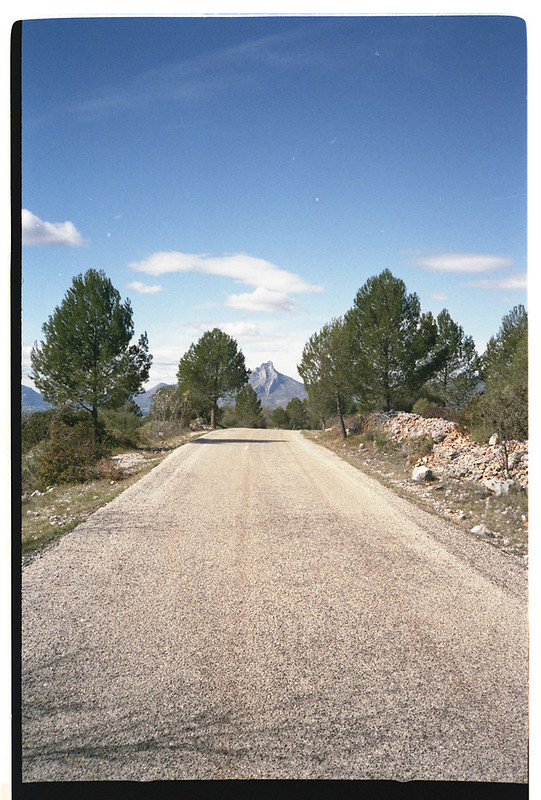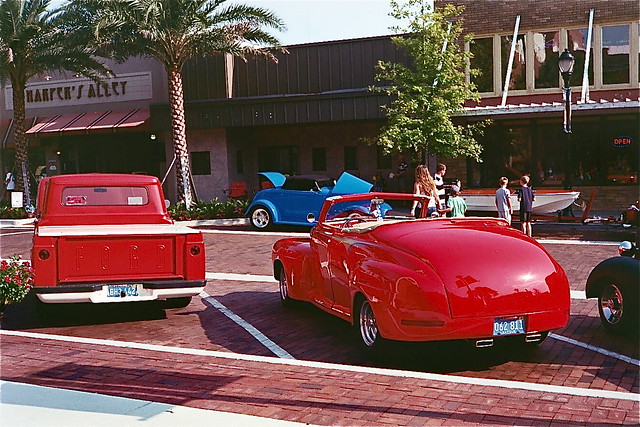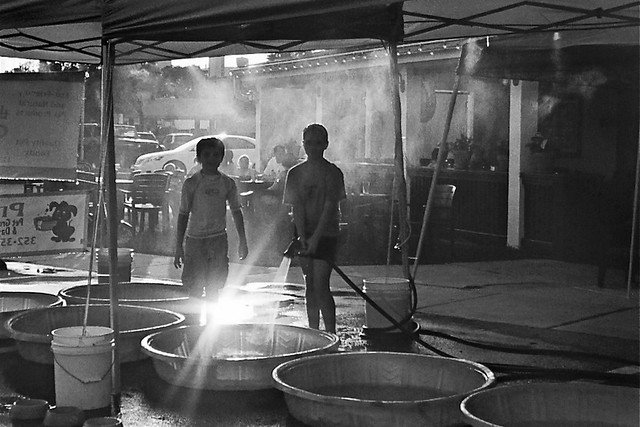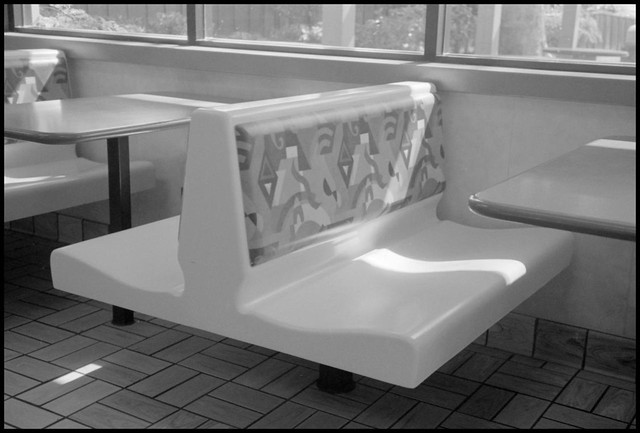Activatedfx
Newbie
New guy here. I wanted to find out what the "rangefinder experience" was all about, so I picked up a nice CLA'ed Canonet QL17 iii and a mint Yashica Electro 35 "GX".
Unfortunately, the Canonet took a hit in shipping and had to go back to have the RF patch re-aligned, so I can't compared them yet. But I've shot a few rolls with the Yashica, and I am very pleased.
The Canonet and GX are nearly identical. Like twins. The GX is a TINY bit bigger, but they both sport a 40mm f/1.7 lens. The main difference is that the Canonet is shutter priority with metering, or full manual without, and the Yashica GX is aperture priority only with over/under warning lights.
A few photos from the Yashica GX, which seems to be very sharp with great bokeh. All at f/1.7, TMax 400 developed at Duggal/NY, and "scanned" with a Sony A7ii and Tamron 90mm Macro (52BB).
Sharp and contrasty!


100% Crop of above.
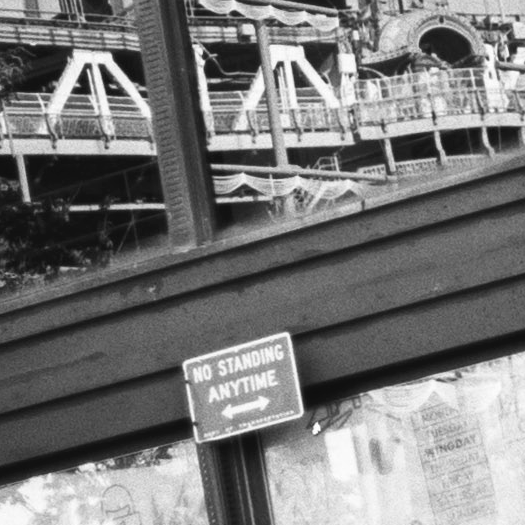
VERY nice bokeh!
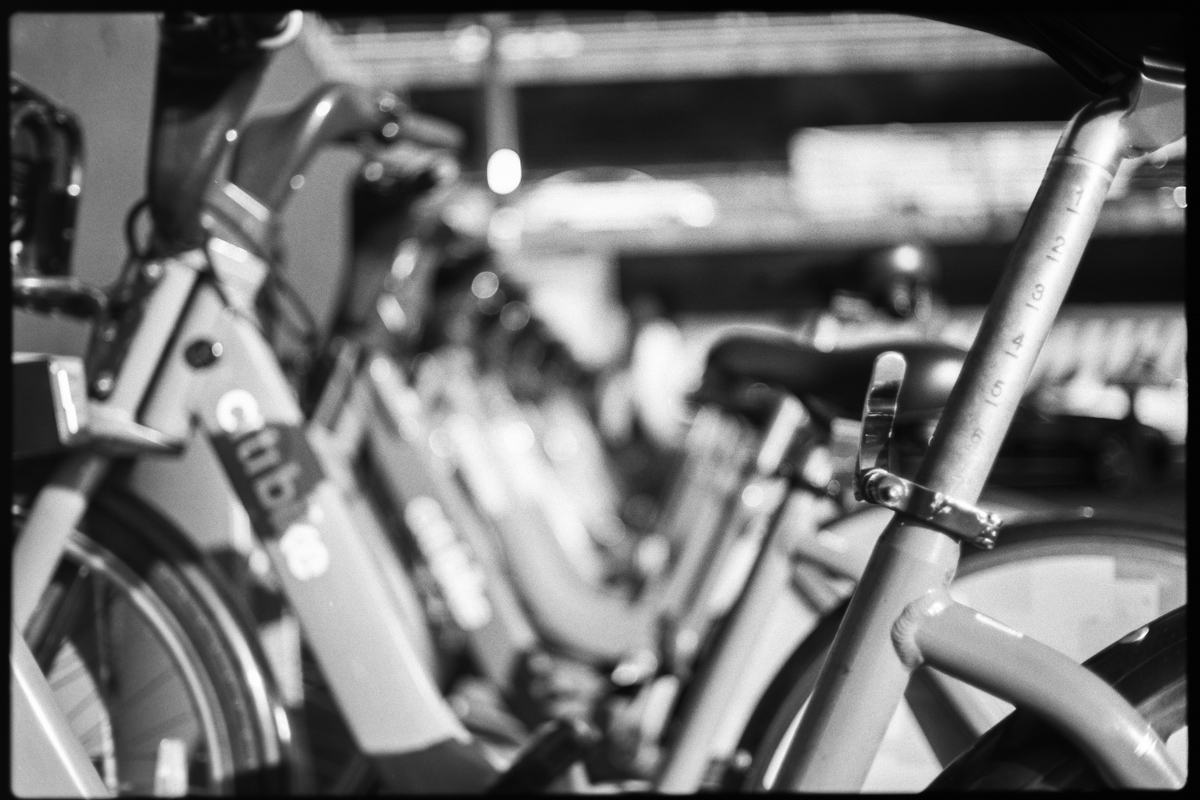
Unfortunately, the Canonet took a hit in shipping and had to go back to have the RF patch re-aligned, so I can't compared them yet. But I've shot a few rolls with the Yashica, and I am very pleased.
The Canonet and GX are nearly identical. Like twins. The GX is a TINY bit bigger, but they both sport a 40mm f/1.7 lens. The main difference is that the Canonet is shutter priority with metering, or full manual without, and the Yashica GX is aperture priority only with over/under warning lights.
A few photos from the Yashica GX, which seems to be very sharp with great bokeh. All at f/1.7, TMax 400 developed at Duggal/NY, and "scanned" with a Sony A7ii and Tamron 90mm Macro (52BB).
Sharp and contrasty!


100% Crop of above.

VERY nice bokeh!

fer_fdi
Well-known
love it! really beautiful and special
ChrisPlatt
Thread Killer
AFAIK aperture and shutter speed in finder is unique to the Olympus 35RC.
It also has the shutter speed dial conveniently located on the top deck.
Chris
It also has the shutter speed dial conveniently located on the top deck.
Chris
Jack Conrad
Well-known
charjohncarter
Mentor
gnuyork
Well-known
I have not tried all 5. Only the Canonet. I have two. The image quality is very good.
hendriphile
Well-known
Back in the 70’s I found the Konica S2 to be an excellent performer. I’d assume the same to be true of the S3.
NickTrop
Mentor
I have used/owned 3 of the 5. The Canon, the Konica, and several Yashicas.
1. Canon -- nicely made. Never got on with it. Dunno why. True of all Canons. Not a Canon guy.
2. Several GSNs. Nice lens. Unique aperture priority exposure. But downsides:
a. Pad of death
b. Large
I would go for the Yashica CC (which I owned) but first choice would be GX (which I never owned).
3. Konica Auto S3
This, of the group, would be the one I would get. Great lens. Tiny. Perfect for street photography. Innovative (for the time) flash system. Build quality worst of the lot -- big step down over the others. Yet? Have lasted 40 years. I've thought about buying another but -- nah.
The only fixed lens rangefinder I would pick up now -- and it seems to be forgotten in some ways, is the Olympus 35 SP.
1. Canon -- nicely made. Never got on with it. Dunno why. True of all Canons. Not a Canon guy.
2. Several GSNs. Nice lens. Unique aperture priority exposure. But downsides:
a. Pad of death
b. Large
I would go for the Yashica CC (which I owned) but first choice would be GX (which I never owned).
3. Konica Auto S3
This, of the group, would be the one I would get. Great lens. Tiny. Perfect for street photography. Innovative (for the time) flash system. Build quality worst of the lot -- big step down over the others. Yet? Have lasted 40 years. I've thought about buying another but -- nah.
The only fixed lens rangefinder I would pick up now -- and it seems to be forgotten in some ways, is the Olympus 35 SP.
Brian Legge
Mentor
The Olympus 35 DC is underrated. The quality of photos I took with it put me down the rabbit hole trying to find an RD for manual control. I paid a premium for a maintained working one in good condition. It worked for about 3 months. I put a few hundred into quality service for it which resurrected it for a year... then it’s shutter got gummed up again. In hindsight I should’ve held on to the DC instead.
awilder
Alan Wilder
Had the Canon GIII back in the late 70's and enjoyed using it but had to be stopped down to at least f/2.8 for decent performance. Not in the group was the Rollei 35S or SE. It had better overall build quality than the Japanese compacts mentioned, made to last for decades and smaller but denser than any other compact 35mm camera. The lens quality and drawing was superb. The downside other than cost was the somewhat quirky operation, meter's poor low light sensitivity and scale focus. The even more costly Contax T with the same lens addressed the RF and meter issues but at the loss of any manual exposure control.
Shafovaloff1
Well-known
Three carry around cameras: Olympus 35 ED, Minolta Hi-Matic F and finally Minoltina - P (no battery required). My Olympus 35 ED is really sharp and is fully automatic. The lens is a 38mm 2.8 and the meter sensitivity has a very wide latitude, into low light situations. I put two button batteries in one battery compartment in series and a conductive "spring" in the second. If bought most likely you will have to take out the battery tub and put new insulation under it and re-solder the contact wires to the battery tub. {Consider buying electrical glue and covering with "Super-X" providing strength and acting as shrink wrap. After that though you will have a never leave at home sharp axx camera. The view finder is like wow! The charts for shutter show it something like 2 seconds to 1/1100. The flash circuit design is nice too. The other similar camera I have is a Minolta Hi-Matic F. These are more difficult to find without electrical corrosion but if you take your time and remedy that the lens has hugely great definition even at infinity. I have seen an example of a shot from a high building into a conference room a ~1/4 mile away and you could see the chairs inside. But like I said the Minolta corrosion problem may require fixing....but another great carry around. The Minoltina -P is fully automatic with a meter and manual at the flash shutter speed, adjustable aperture scale provided as well as focus field scale. Cut out a copy of the shutter EV chart and you will see the aperture and shutter speed the "computer" will use, tape this to the back of the camera. It also has a 38mm 2.8 lens that is step field focused. In the past I have rebuilt these. This camera will perform at the North Pole and on the top of Everest, I promise!
Jeremy Z
Well-known
Better late than never!
Better late than never!
I'm mostly posting to document my experiences with these cameras.
My choice of the below cameras would be either Electro 35 GSN if you want a low light beast and auto parallax correction or the 35 RC, if you want more compact camera. The Electro 35's full size body feels great in the hand; there's room for all three fingers on the right hand.
Konica Auto S3 - No experience.
Canonet QL17 GIII - I had one. Its build quality was good, but the shutter release button and film advance feel mushy. I recall that the lens wasn't as good as I thought it should be, either. (not that sharp or contrasty) This one is not worth the hype and inflated prices, IMO.
Yashica Electro 35 GSN - I have the GS, which is like the GSN, but without the hot shoe. (it's cold) I love this camera. It's big enough to hold onto, has very nice fit & finish and is almost as fast as a point & shoot, due to its aperture-priority automation. It has the quietest, smoothest shutter on any camera I've ever had, and its shutter speed control will go at least 30 sec. The lens is sharp when stopped down and nice & smooth wide open, but it's only mono-coated, so get a small hood. (a large hood will obstruct the rangefinder and block a lot of the viewfinder as well) Occasionally, I wish I had a way to override the AE other than changing the ISO. If not recently serviced, these will all have the Pad of Death issue. However, there are tutorials you can search up on how to fix it yourself, if you're adventurous.
Minolta Hi-Matic 7SII - Never shot one, nor even held one, but they are highly regarded.
Olympus 35 RC - I have one and love it. It's my go-to compact rangefinder, when I'm not shooting the Rollei 35. The Olympus' lens is just as good, faster and no errors guessing closer focus distances in lower light with the lens wide open. The focus ring feels cheap and nasty, but works. The film advance is the lowest effort and has this buttery smooth feeling to it. It uses a simple ratcheting mechanism to make it a step nicer than a Trip 35's ghetto film advance wheel.
Better late than never!
I'm mostly posting to document my experiences with these cameras.
My choice of the below cameras would be either Electro 35 GSN if you want a low light beast and auto parallax correction or the 35 RC, if you want more compact camera. The Electro 35's full size body feels great in the hand; there's room for all three fingers on the right hand.
Konica Auto S3 - No experience.
Canonet QL17 GIII - I had one. Its build quality was good, but the shutter release button and film advance feel mushy. I recall that the lens wasn't as good as I thought it should be, either. (not that sharp or contrasty) This one is not worth the hype and inflated prices, IMO.
Yashica Electro 35 GSN - I have the GS, which is like the GSN, but without the hot shoe. (it's cold) I love this camera. It's big enough to hold onto, has very nice fit & finish and is almost as fast as a point & shoot, due to its aperture-priority automation. It has the quietest, smoothest shutter on any camera I've ever had, and its shutter speed control will go at least 30 sec. The lens is sharp when stopped down and nice & smooth wide open, but it's only mono-coated, so get a small hood. (a large hood will obstruct the rangefinder and block a lot of the viewfinder as well) Occasionally, I wish I had a way to override the AE other than changing the ISO. If not recently serviced, these will all have the Pad of Death issue. However, there are tutorials you can search up on how to fix it yourself, if you're adventurous.
Minolta Hi-Matic 7SII - Never shot one, nor even held one, but they are highly regarded.
Olympus 35 RC - I have one and love it. It's my go-to compact rangefinder, when I'm not shooting the Rollei 35. The Olympus' lens is just as good, faster and no errors guessing closer focus distances in lower light with the lens wide open. The focus ring feels cheap and nasty, but works. The film advance is the lowest effort and has this buttery smooth feeling to it. It uses a simple ratcheting mechanism to make it a step nicer than a Trip 35's ghetto film advance wheel.
Hi,
I am looking into getting a fairly affordable rangefinder and stumbled upon a couple of recommendations that seem to pop up everywhere. However, it's hard to come by a comparative analysis, and was wondering if anyone here has had experience with some of the 5 models below:
- Konika Auto S3
- Canonet QL17 GIII
- Yashica Electro 35 GSN
- Minolta HiMatic 7SII
- Olympus 35 RC
If price and availability were not issues, which one would you go for? I'm mainly interested in image quality and camera build quality, but if anyone has had experience with these and has some other reasons to favor one or the other, by all means please advise .
Many thanks
Share:
-
This site uses cookies to help personalise content, tailor your experience and to keep you logged in if you register.
By continuing to use this site, you are consenting to our use of cookies.


